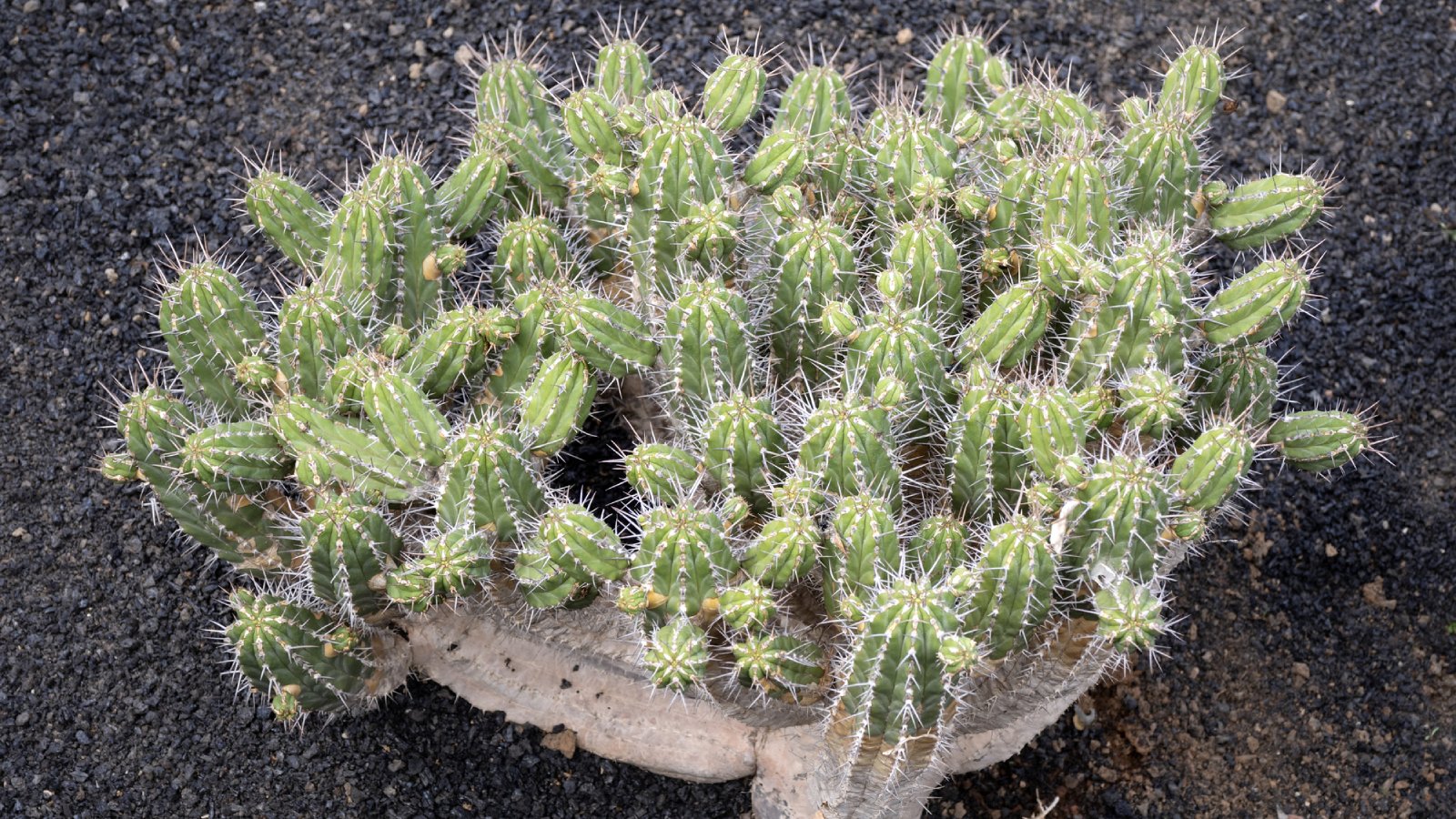Moroccan Mound Succulents: How To Grow Euphorbia Resinifera Plant

Euphorbia resinifera cactus is not actually a cactus but is closely related. Also referred to as resin spurge or Moroccan mound plant, it is low-growing succulent with a lengthy history of cultivation. As the name suggests, Moroccan mound succulents are native to Morocco where they can be found growing on the slopes of the Atlas Mountains. Interested in growing Moroccan mound succulents? Read on to learn how to grow Moroccan mound euphorbias.
About Moroccan Mound Euphorbias
The Moroccan mound plant grows 1-2 feet (30.5 to 61 cm.) in height by about 4-6 feet (1 to 2 m.) across. It is a succulent that has an upright habit of pale blue-green, four-sided stems with brown spines along the margins and near the rounded tip. The plant bears small yellow blooms in late winter to early spring. A hardy plant, Moroccan mound euphorbia can be grown in USDA zones 9-11. Moroccan mound plants have been cultivated for centuries for medicinal uses. Pliny the Elder makes reference to Euphorbus, the physician of King Juba II of Numidia for whom the plant is named. This succulent was cultivated for its extracted latex, called Euphorbium and is one of the oldest documented medicinal plants.
How to Grow Euphorbia resinifera Cactus
This succulent can be used as a textural accent either as a specimen plant or in containers with other likeminded succulents. In mild climates, they can be grown outside and are very low maintenance. They enjoy full to partial sun. Growing Moroccan mound takes little effort as long as the soil is well-draining; they are not picky about the soil they grow in and require little water or feeding. The plant will rapidly mound, branch and spread. It can easily be propagated by the use of cuttings. Remove a branch or offset, wash the severed end to remove the latex, and then allow it to dry for a week or so to allow the wound to heal. Note on the aforementioned latex – as with all euphorbia plants, Moroccan mound exudes a thick, milky sap. This latex, actually the plant’s resin, is poisonous. It can be dangerous to get on the skin, in the eyes, or in mucous membranes. Handle plants carefully with gloves and avoid rubbing eyes or nose until your hands are completely washed and clean.
Sign up for the Gardening Know How newsletter today and receive a free copy of our e-book "How to Grow Delicious Tomatoes".

Amy Grant has been gardening for 30 years and writing for 15. A professional chef and caterer, Amy's area of expertise is culinary gardening.
